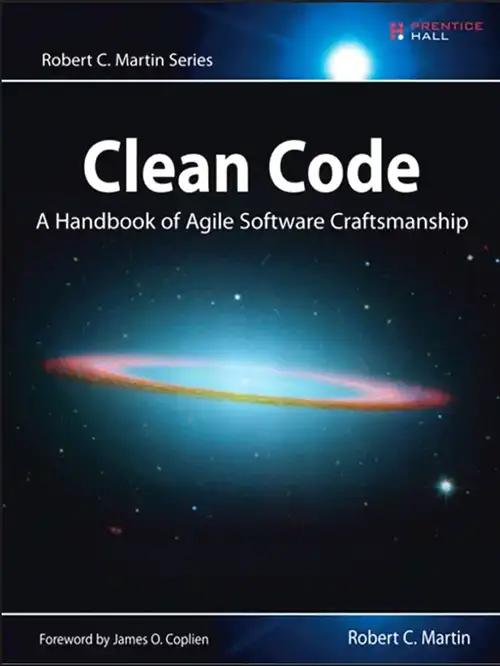Introducing the book “Clean Code: A Handbook of Agile Software Craftsmanship”

Book Information for Clean Code
- English Title: Clean Code: A Handbook of Agile Software Craftsmanship
- Author: Robert C. Martin
- Publication Year: 2008
Key Topics
- Clean code writing and code maintenance
- Agile software development principles
- Designing and developing software focused on readability and ease of maintenance
- Continuous code improvement and its practicality
About Clean Code
Clean Code: A Handbook of Agile Software Craftsmanship by Robert C. Martin is one of the most influential books in the field of programming and software engineering. It teaches how to write clean, maintainable code and is an invaluable resource for professional programmers and anyone looking to enhance their coding skills.
In this book, the author explores essential concepts such as principles of clean coding, the use of patterns, coding practices, and heuristics, guiding readers on how to write code that is both readable and maintainable. Through real-world examples and code analysis, the author shows how to identify issues in complex code and transform them into clean, efficient code.
One of the standout features of this book is that it doesn’t just focus on theories and principles but also includes practical exercises and case studies that allow readers to apply what they learn to real-world situations. This book is recommended not only for software developers but also for anyone interested in improving software quality.
Why Should You Read This Book?
This book is essential for any programmer who wants to take their skills to a higher level of professionalism. Clean Code is not only about improving code quality but also about increasing the productivity of development teams and maintaining the longevity of the software products they create. It teaches you how to write code that is both efficient and maintainable, especially in large and complex projects.
Contents of Clean Code
📌 Chapter 1: Clean Code – The concept of clean code and its contrast with messy and complex code.
📌 Chapter 2: Meaningful Names – The importance of choosing meaningful names for variables, functions, and classes.
📌 Chapter 3: Functions – Principles for writing short, focused functions that follow specific rules.
📌 Chapter 4: Comments – Analyzing and guiding the proper and logical use of comments in code.
📌 Chapter 5: Formatting – Formatting rules for better readability of code.
📌 Chapter 6: Objects and Data Structures – Tips and techniques for designing clean objects and data structures.
📌 Chapter 7: Error Handling – Correct ways to manage errors and use exceptions.
📌 Chapter 8: Boundaries – Principles for interacting with third-party code and managing system boundaries.
📌 Chapter 9: Unit Tests – Maintaining clean code through unit tests.
📌 Chapter 10: Classes – How to design small classes with clearly defined responsibilities.
📌 Chapter 11: Systems – Principles for designing large, scalable systems.
📌 Chapter 12: Emergence – How to design simple and emergent software.
📌 Chapter 13: Concurrency – Challenges of concurrency and how to manage them in code design.
📌 Chapter 14: Gradual Refinement – The importance of continuous code refinement in the development process.
📌 Chapter 15: JUnit Internals – Analyzing the internals of the JUnit framework for effective testing.
📌 Chapter 16: Refactoring SerialDate – Techniques for refactoring and optimizing code.
Summary
Clean Code is a must-read for any serious and professional programmer. It shows how, by following simple principles, you can write code that is clean, maintainable, and capable of being extended and improved over time. If you want to progress in your programming career and become a true professional, this book should be on your reading list.

